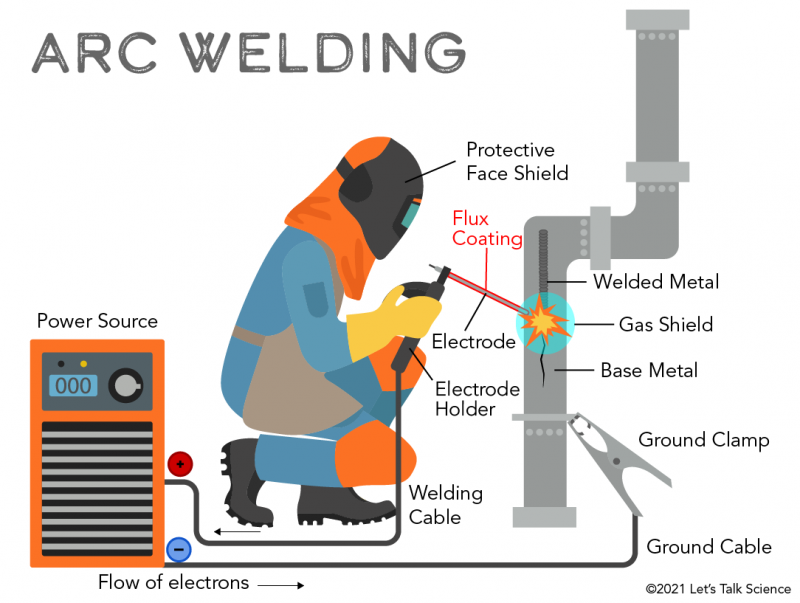Why a Welding WPS is Crucial: Enhancing Uniformity and Compliance
Why a Welding WPS is Crucial: Enhancing Uniformity and Compliance
Blog Article
The Ultimate Overview to Welding WPS Procedures: A Detailed Review for Welders
In the complex globe of welding, Welding Procedure Requirements (WPS) act as the backbone of making sure top quality, uniformity, and safety and security in welding procedures. Recognizing the nuances of producing, executing, and keeping track of WPS procedures is important for welders aiming to boost their craft and meet industry requirements. As we delve into the different parts of a WPS and discover the ins and outs of qualification and qualification, we will reveal the essential function these treatments play in the world of welding. Allow's start a trip to untangle the intricacies and importance of WPS treatments in welding methods.
Value of WPS Procedures
Understanding the relevance of Welding Procedure Specs (WPS) treatments is essential for making sure the high quality and honesty of bonded structures. WPS procedures offer as a roadmap for welders, outlining the essential actions, criteria, and products required to attain a sound weld. By sticking to WPS guidelines, welders can make sure consistency in their work, causing trustworthy and structurally sound welds.
One of the primary reasons that WPS procedures are crucial is their function in preserving weld top quality and integrity. Complying with the defined welding criteria and techniques laid out in the WPS assists protect against issues such as porosity, splitting, or incomplete blend, which can jeopardize the strength and toughness of the weld. Furthermore, WPS treatments are important for making certain compliance with industry criteria and codes. By complying with well established WPS standards, welders can demonstrate that their job meets the required requirements for safety and security and high quality, providing assurance to customers, assessors, and regulative bodies. Essentially, the relevance of WPS treatments can not be overemphasized, as they are fundamental to achieving regular, top notch welds that satisfy industry requirements and requirements.

Components of a WPS
A Welding Treatment Specification (WPS) typically makes up vital elements that detail the details requirements for performing a weld, ensuring consistency and quality in the welding procedure. The key parts of a WPS consist of essential variables such as base metals, filler metals, preheat and interpass temperature levels, welding procedures, protecting gases, welding settings, and post-weld warm treatment demands.
Base metals refer to the products being joined, while filler steels are used to load the gap between the base metals throughout welding. The welding process outlines the certain technique to be utilized, whether it's gas steel arc welding (GMAW), shielded steel arc welding (SMAW), or an additional approach. Welding placements specify the orientations in which welding can be executed.

Credentials and Certification
Having actually established the vital components of a Welding Procedure Requirements (WPS), the focus currently changes in the direction of the critical aspects of certification and qualification in welding techniques.

Qualification, on the various other hand, is the official recognition of a welder's qualifications by an appropriate accreditation body or company. Welding accreditations are commonly based upon the particular welding processes, products, and settings a welder is qualified to deal with. Holding a valid welding accreditation shows that a welder meets sector standards and is experienced to carry out welding jobs to the needed specs.
Creating a WPS
To create a Welding Treatment Spec (WPS) that fulfills sector criteria, mindful factor to consider of welding procedures, materials, and operational criteria is vital (welding WPS). The initial step in producing a WPS is to identify the welding process to be used, such as gas metal arc welding (GMAW) or protected metal arc welding (SMAW) Once the welding process is identified, the following crucial facet is picking the proper products, taking into consideration factors like base metal type, thickness, and joint reference layout. Functional specifications such as welding existing, voltage, travel speed, and protecting gas make-up need to also be meticulously defined in the WPS.

Implementing and Keeping An Eye On WPS
Upon wrapping up the thorough Welding Procedure Specification (WPS) that diligently information welding procedures, products, operational criteria, and top quality assurance actions, the focus shifts to successfully carrying out and keeping track of the established treatments. Application includes making sure that all welders entailed in the project are acquainted with the WPS and follow it carefully throughout the welding process. Reliable implementation and surveillance of the WPS are important for making certain the integrity, strength, and safety and security of the welded joints, eventually contributing to the total success of the welding job.
Final Thought
Finally, understanding and complying with Welding Procedure Requirements (WPS) is crucial for welders to guarantee quality, consistency, and safety in their job. By understanding the components of a WPS, getting correct certifications and qualifications, developing comprehensive treatments, and implementing and monitoring them successfully, welders can enhance their abilities and proficiency in investigate this site welding techniques. Abiding by WPS procedures is crucial for generating high-grade welds and meeting industry standards.
In the detailed world of welding, Welding Procedure Specifications (WPS) offer as the foundation of ensuring quality, uniformity, and safety and security in welding procedures. The welding procedure outlines the particular method to be made use of, whether it's gas steel arc welding (GMAW), shielded metal arc welding (SMAW), or an additional approach.To create a Welding Treatment Spec (WPS) that fulfills sector criteria, mindful factor to consider of welding procedures, products, and operational criteria is vital. The initial action in creating a WPS is my blog to determine the welding procedure to be utilized, such as gas steel arc welding (GMAW) or shielded metal arc welding (SMAW)Upon wrapping up the comprehensive Welding Procedure Specification (WPS) that thoroughly information welding procedures, products, functional specifications, and quality guarantee measures, the emphasis changes to effectively carrying out and checking the recognized procedures.
Report this page